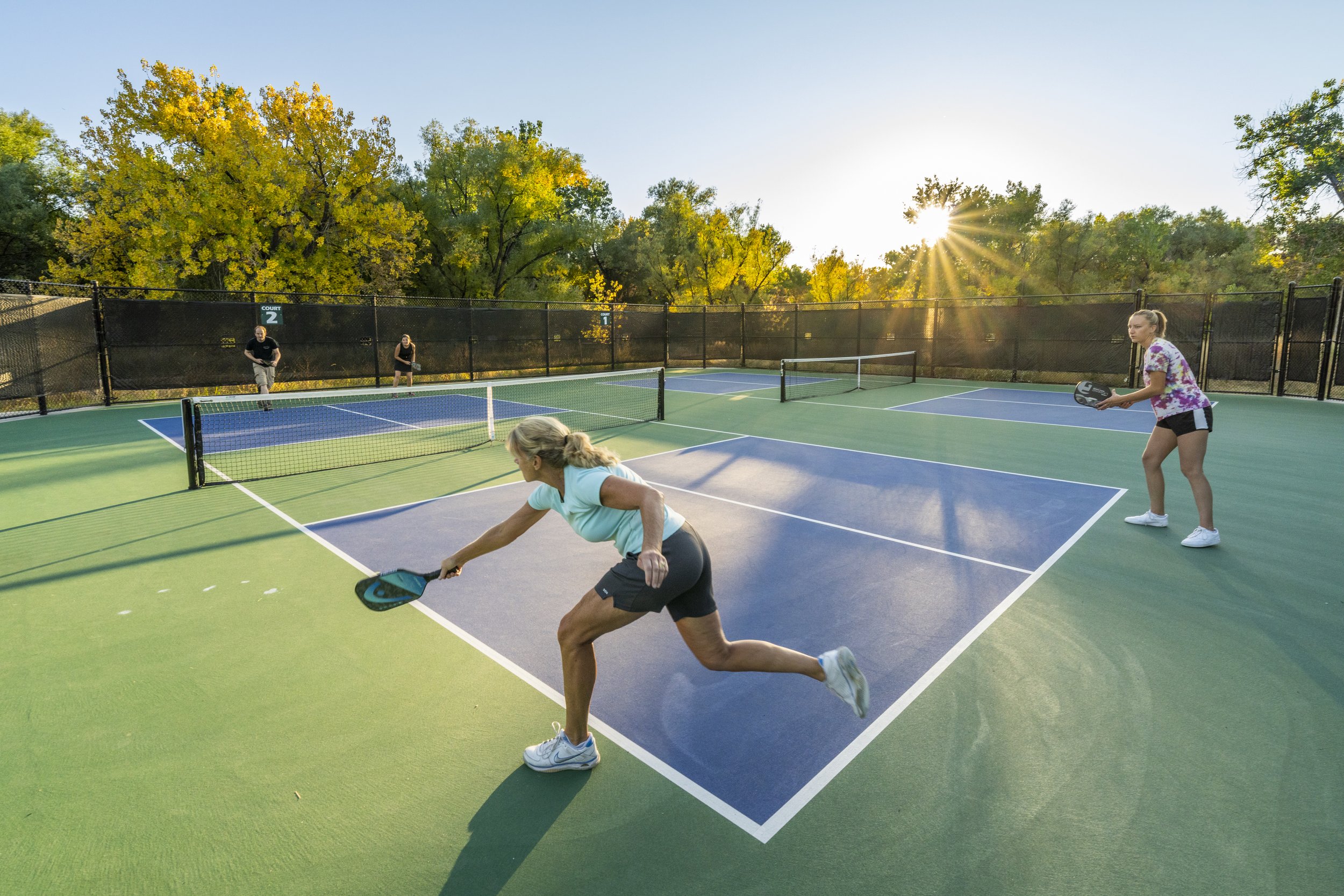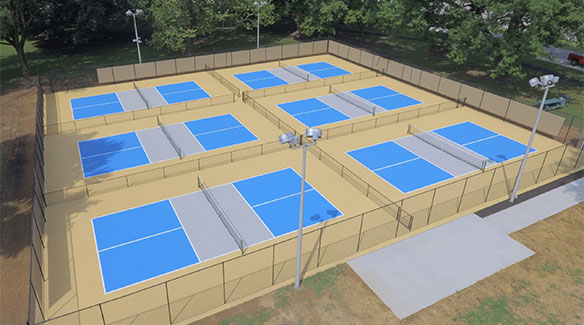Boost Citizen Involvement With Community-Driven Pickleball Court Projects
The appearance of community-driven pickleball court tasks presents an one-of-a-kind possibility to foster regional interaction and strengthen community ties. By proactively including citizens in the preparation and implementation phases, such efforts not just create recreational spaces yet also promote a shared sense of ownership. Understanding the actions to start these tasks, consisting of effective stakeholder interaction and resource appropriation, is essential. The actual concern stays: just how can these grassroots initiatives be purposefully carried out to guarantee sustainability and inclusivity in diverse neighborhoods? Checking out effective instance research studies may provide the understandings required to address this essential worry.
Value of Area Interaction
Community interaction is an important element in the successful growth of pickleball court jobs, as it promotes a sense of possession and cumulative responsibility amongst residents. When neighborhood members are proactively associated with the preparation and implementation stages, they are more probable to support for the job's lasting success. Involving stakeholders such as regional players, households, and leisure teams ensures that the facilities meet the varied needs and choices of the community.
Furthermore, community interaction grows a helpful environment where locals really feel empowered to add their ideas and sources. Pickleball court construction. This collective method can bring about cutting-edge options that enhance the style and functionality of the courts, making them a lot more attractive to a larger target market. In addition, involving homeowners in decision-making processes can strengthen social ties, advertising inclusivity and unity within the neighborhood
The exposure of area assistance for a pickleball task can also play a pivotal function in protecting financing and authorization from regional authorities. By showing a shared dedication to recreational development, neighborhoods can efficiently support for resources and policy adjustments that prefer the establishment of pickleball courts, inevitably enriching the local culture and recreational landscape.
Actions to Start a Project
Starting a pickleball court task calls for a systematic approach that improves the structure of neighborhood involvement developed in previous conversations. The initial step is to set up a job committee consisting of regional stakeholders, enthusiasts, and reps from pertinent companies. This varied team ensures that multiple perspectives are taken into consideration.
Next, carry out a demands analysis within the neighborhood. Studies, focus groups, and public conferences can be efficient in determining interest and gathering input on possible court locations, preferred amenities, and organizing preferences. Following this, establish a job strategy detailing timelines, goals, and duties.
When the strategy is in location, involve with local authorities to understand zoning guidelines and any needed permits. Interacting transparently with the neighborhood throughout this procedure is critical, as it cultivates trust fund and urges more involvement.
In addition, arranging community occasions can help maintain momentum and enthusiasm. These occasions can work as platforms for further conversation and aid to strengthen neighborhood connections. Last but not least, file every step taken and preserve detailed records, as this will be helpful for future phases of the job, consisting of financing and source procurement.
Funding and Resources Available
Securing financing and resources for a pickleball court task is typically an important step that can establish the job's feasibility and success. Different avenues exist for getting monetary assistance, ranging from public financing to private sponsorships. City government gives, frequently targeted at promoting area health and leisure, can offer significant sponsorship for such initiatives.
Along with government resources, not-for-profit organizations and foundations regularly provide gives especially for sports and area development jobs. Involving regional organizations as sponsors can additionally be a fruitful technique; several companies are excited to purchase community efforts that boost their corporate social obligation account.
Crowdfunding systems have actually arised as a viable option for grassroots fundraising, allowing neighborhood participants to add straight to the job. This technique not just elevates funds yet additionally cultivates a feeling of possession amongst individuals.
Style and Preparation Factors To Consider
Efficient style and planning are essential elements of any successful pickleball court project following the acquisition of financing and sources. A thorough assessment of the recommended area is crucial; this consists of examining availability, distance to existing community facilities, and the potential for presence and interaction.
The design of the court should abide by main dimension specs while considering the bordering atmosphere. Integrating features such as seats, shade structures, and ideal illumination can substantially enhance player experience and viewer enjoyment. Products chosen for the court surface need to focus on sturdiness and safety, with alternatives like acrylic or asphalt offering ideal performance.
Entailing neighborhood participants in the style procedure promotes a sense of possession and ensures that the center meets neighborhood requirements - Pickleball court construction. This can be attained with public consultations and surveys, allowing stakeholders More about the author to reveal their preferences and concerns
Sustainability should also be a top priority; incorporating eco-friendly products and practices can add to lasting practicality. Producing an upkeep plan to make sure the court continues to be in excellent problem will support recurring community engagement and involvement in pickleball tasks.

Success Stories and Study
Highlighting the transformative impact of community-driven campaigns, a number of success stories highlight how joint initiatives have caused the development of vivid pickleball courts throughout various areas. One noteworthy instance is the effort in a village in Florida, where residents united to convert an underutilized tennis court right into a specialized pickleball facility. With fundraising events and collaborations with neighborhood services, the community increased enough funds to set up brand-new nets, resurfacing, and lines, eventually fostering a lively hub for regional see this gamers.
Similarly, in a country area of California, a grassroots activity emerged to produce pickleball courts in a neighborhood park. The project not only engaged volunteers for construction however additionally included workshops to engage neighborhood participants in the sport. As an outcome, the courts came to be a prime focus for social interaction and health and fitness, attracting players of any ages.
These case researches exhibit just how community-driven tasks can improve neighborhood engagement, promote physical activity, and reinforce social bonds. By leveraging collective resources and enthusiasm, neighborhoods can efficiently maintain and develop pickleball centers that offer diverse populations and foster a sense of belonging.

Conclusion
By focusing on stakeholder participation throughout the preparation and implementation phases, these efforts can properly address diverse neighborhood demands. Inevitably, such initiatives contribute to the makeover of public rooms right into dynamic centers of physical fitness and social interaction, enhancing area connections.
The appearance of community-driven pickleball court projects presents an unique chance to promote regional interaction and enhance neighborhood connections.Neighborhood interaction is a crucial element in the successful development of pickleball court projects, as it fosters a feeling of possession and cumulative obligation amongst residents. try this website When neighborhood participants are proactively entailed in the preparation and execution phases, they are a lot more most likely to promote for the job's long-lasting success.Initiating a pickleball court project requires a systematic strategy that constructs on the structure of neighborhood engagement established in previous conversations. The task not only involved volunteers for building but also consisted of workshops to involve neighborhood members in the sporting activity.